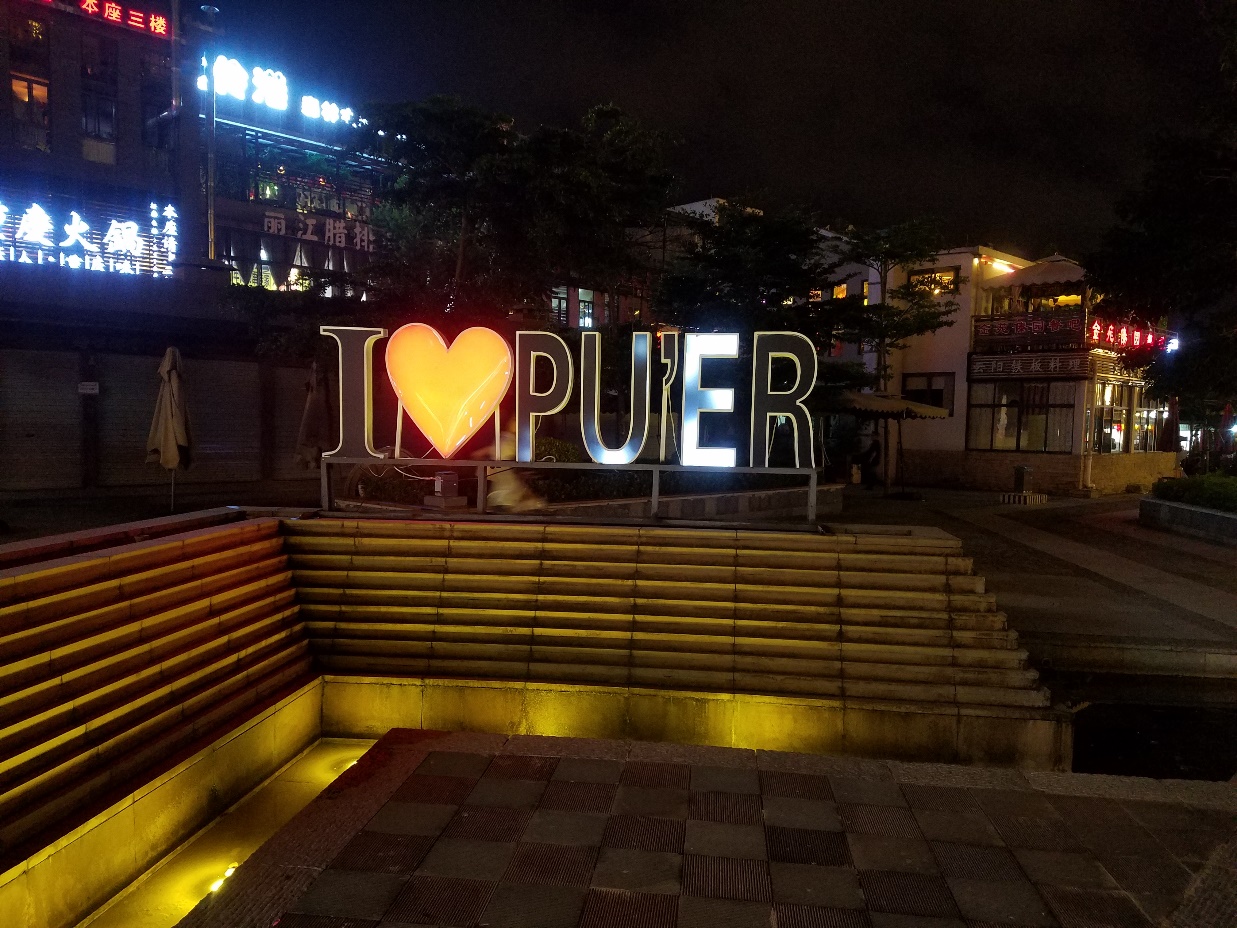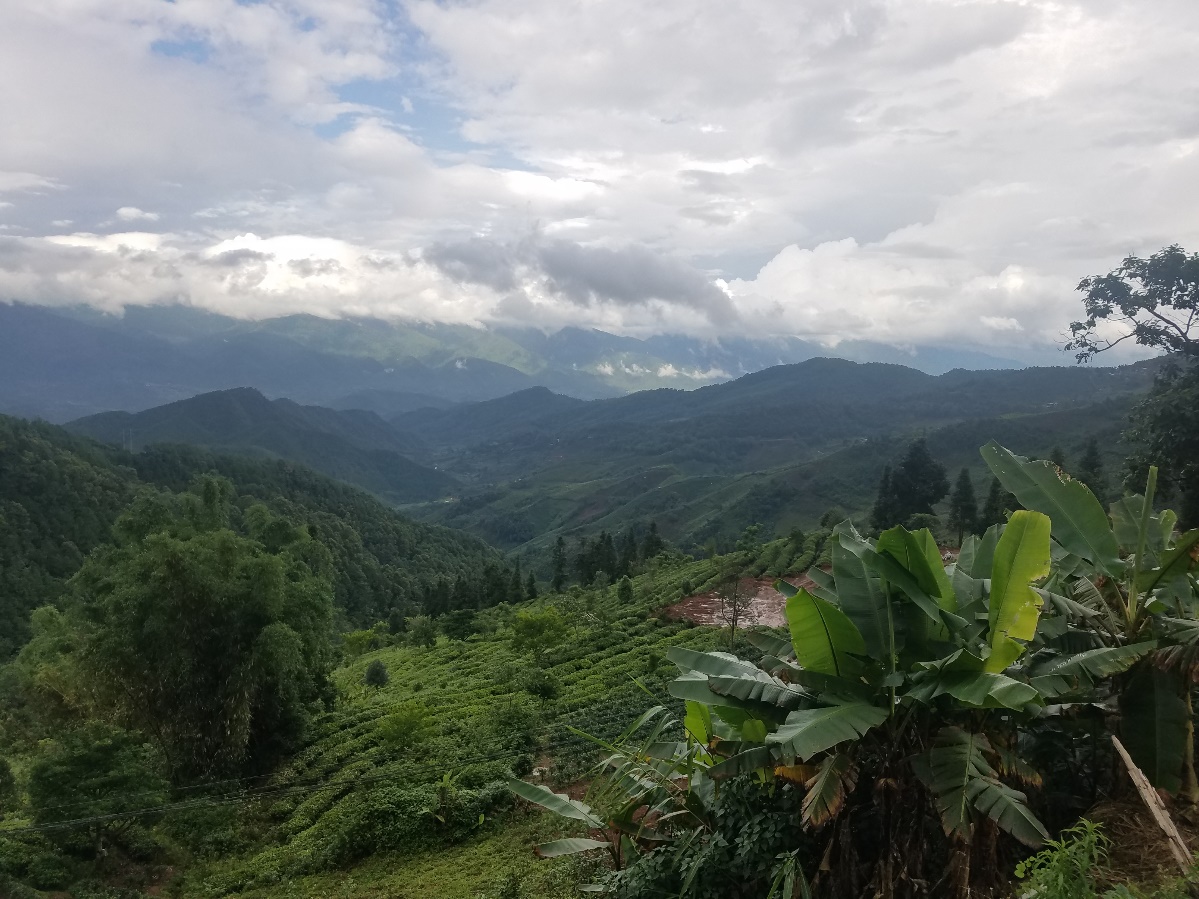Yunnan – Pu’er field trip
---By AFLSP 2017 Scholars
Sometimes we, BAI XIAN scholars, organize group meetings among ourselves to discuss about our academic life, recent events and news. The idea about this field trip came up during one of our coffee time gatherings when we started to discuss about coffee business in China.
After some debate, we decided to do some research about coffee in our future field trip. Pu’er city which is located in China's most south-western province Yunnan, famous for its enchanted nature, was chosen as destination. Pu’er is one of the major tea and coffee centres in China and its tea has worldwide popularity. However, in our field trip we decided to take a closer look at coffee produced there.
Since it was a group travel, we distributed all the organizational work among our members. Artem and Zhannur took the responsibility of making our daily schedule, Yura was appointed to preconfigure with those whom we meet there; Pierre was responsible for the air tickets, while Gaby calculated the hotel budget and booked rooms for us. In this journey, I and my colleague's task was to write a narrative report about the journey and news report to the university newspaper.
Our first flight, Hangzhou-Kunming, scheduled for 20th June at 9 am, was postponed due to the bad weather conditions. Notwithstanding, we decided to completely change the routine on the same day, in order to catch up the connecting flight in Kunming. Instead of Hangzhou, we planned to get to Shanghai and from there to Kunming. But no one was absolutely sure that we would be able to get there on time.
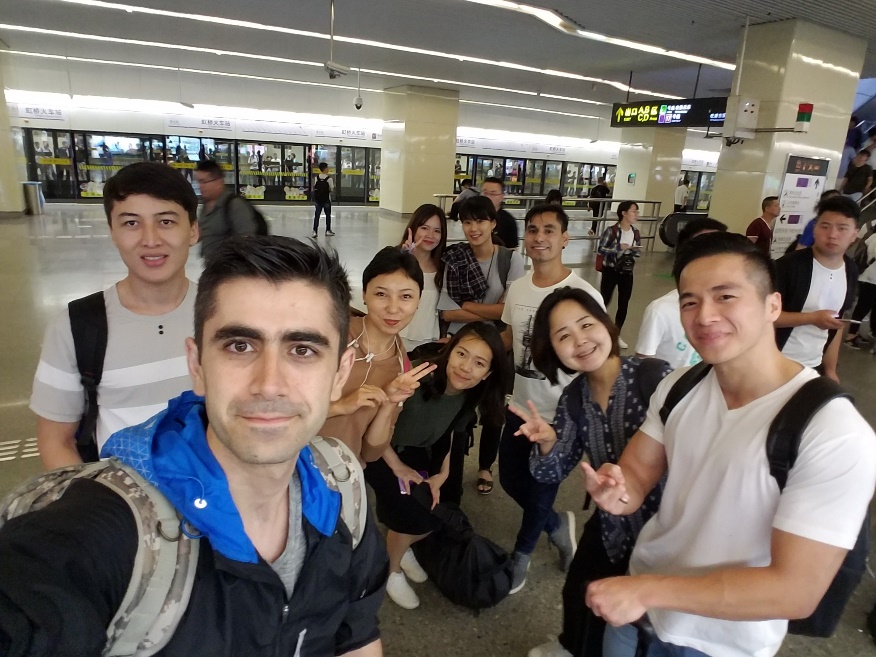
To do so, we first went to Hangzhou Railway Station and got on the train, and after an hour reached Shanghai Station. Since the airport was too far away from there, we headed towards the airport by Shanghai metro line. In order to catch the time as it was getting closer to flight time, we have overtaken the halfway by “Maglev”, one of the fastest transportation modes in China. "Maglev" took us to Shanghai airport within 10 minutes. As we arrived at the airport on time, we were happy to catch up our flight.
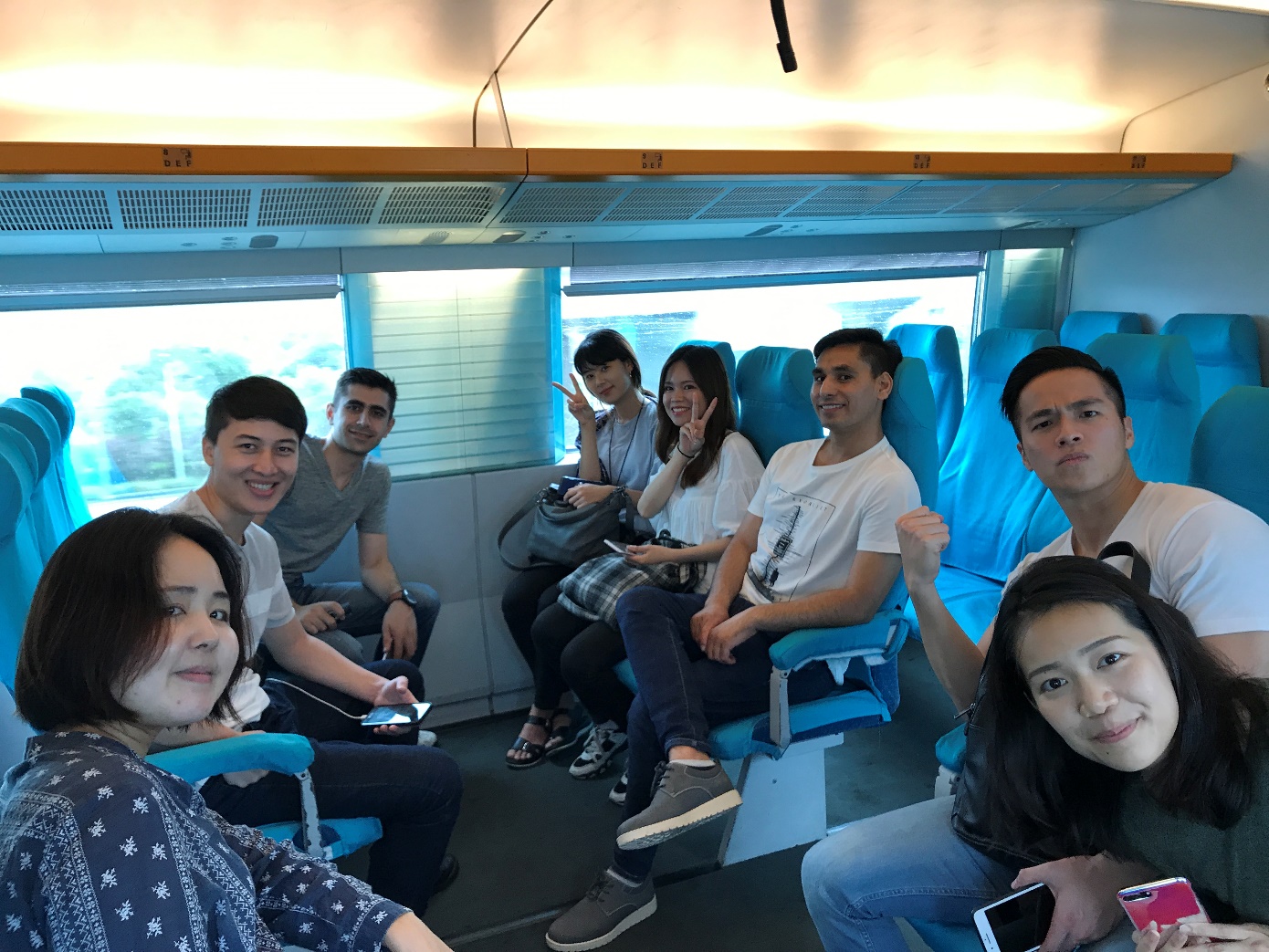
We arrived at Kunming airport at 5 pm. Since we had more than 2 hours before the next flight, we had to wait in the terminal.
Finally, at 7 pm, we reached Pu’er city. The city's airport was rather small but quite comfortable. We arrived at the hotel very soon by the minibus waiting for us near the airport. After we moved in our rooms and had some rest, we went out to discover the city despite being tired. After a short walk from our hotel, we reached the busy crowded streets near the city centre.
We enjoyed in the city: the streets were clean, the roads were tidy and well-organized, and there were not many cars, moreover, the weather was very good, the climate was dry and clean.
Pu’er, having the highest climate comfort index, the richest biology diversity and the best air cleanliness, is one of the most liveable cities in China, even in the world, hence the name the Garden of Eden on the Earth. The city brand “Divine Pu’er” highlights its geographical, ecological and historical advantages, and manifests the charm of tea culture, ethnic culture, ecological and border culture. It also reflects Pu’er people’s idea of “Admiring the nature, conforming to nature and pursuing the harmony between human and the nature”
It lies in the southwest of China, with a population of 2,59 million living in its 9 counties, 1 district and 103 townships. 14 ethnic groups such as Han, Hani, Yi, Lahu, Wa and Dai have long lived there. The number of ethnic groups accounts for 61% of the total population. With an area of 45,000 km2, it is the biggest prefecture in Yunnan province. It neighbours Vietnam, Laos and Myanmar with a national boundary of 486 km. Pu’er tea, coffee and dendrobium are known as the three treasures of Pu’er.
On June 21st in the morning, after breakfast, according to the schedule we went to a meeting with an American businessman, who was engaged in coffee sales.
We arrived at the office which was located in coffee shops street a bit earlier than the arranged time. But the host was waiting for us outside, and while catching our sights, welcomed us warmly. When we come in, he asked each of us our favourite coffee type, and according to our preference, he started preparing coffee for us by himself. Until the coffee was ready, we got acquainted with the office environment and asked him various questions. The entrepreneur, who was very sincere and polite, told us about his arrival in China, how he started his business, and answered all our questions in detail. The conversation with the specialty coffee was very enjoyable and meaningful. We got brief answers to our questions and also learned a lot of interesting information about this sphere. At the end of the conversation, we handed him the souvenir gift that we had brought with us and went to our next destination.
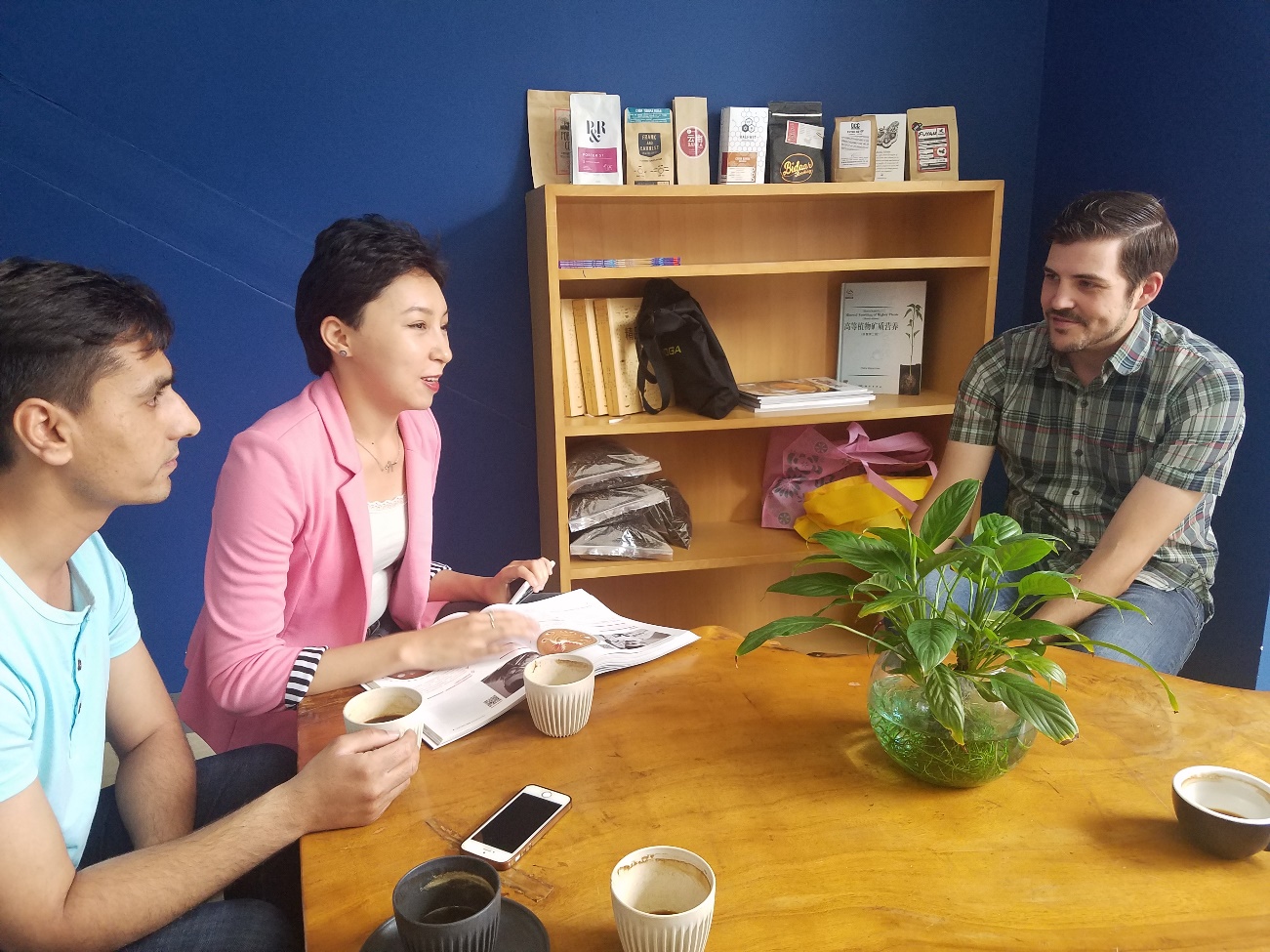
The latter plan was to meet with the local Chinese businessman. We had arranged to meet him firstly, and to visit local farmers under his guidance. After meeting him at 12 pm, we went to the coffee plantations together. He also gave us detailed information about how he started his business, the activities of local farmers, the overall state of coffee business in China.
Going through dangerous mountainous roads with full of turns was amazing experience that we had during the way. Fortunately, the driver of the minibus was quite professional of his major that we reached the high slopes of the mountain safely. At 2pm, we reached a small village on the top of the mountain. There we visited one of the local farmers’ home. In addition, our guide showed us how to make high-quality coffee there. When we were there, it rained several times, and the way we came from became very slippery. While going back, at one place, our car drowned in the mud and we had to get off and move it by hand. We reached the hotel at 5 o'clock. Although all were tired, we enjoyed the trip, everyone was in happy mood.
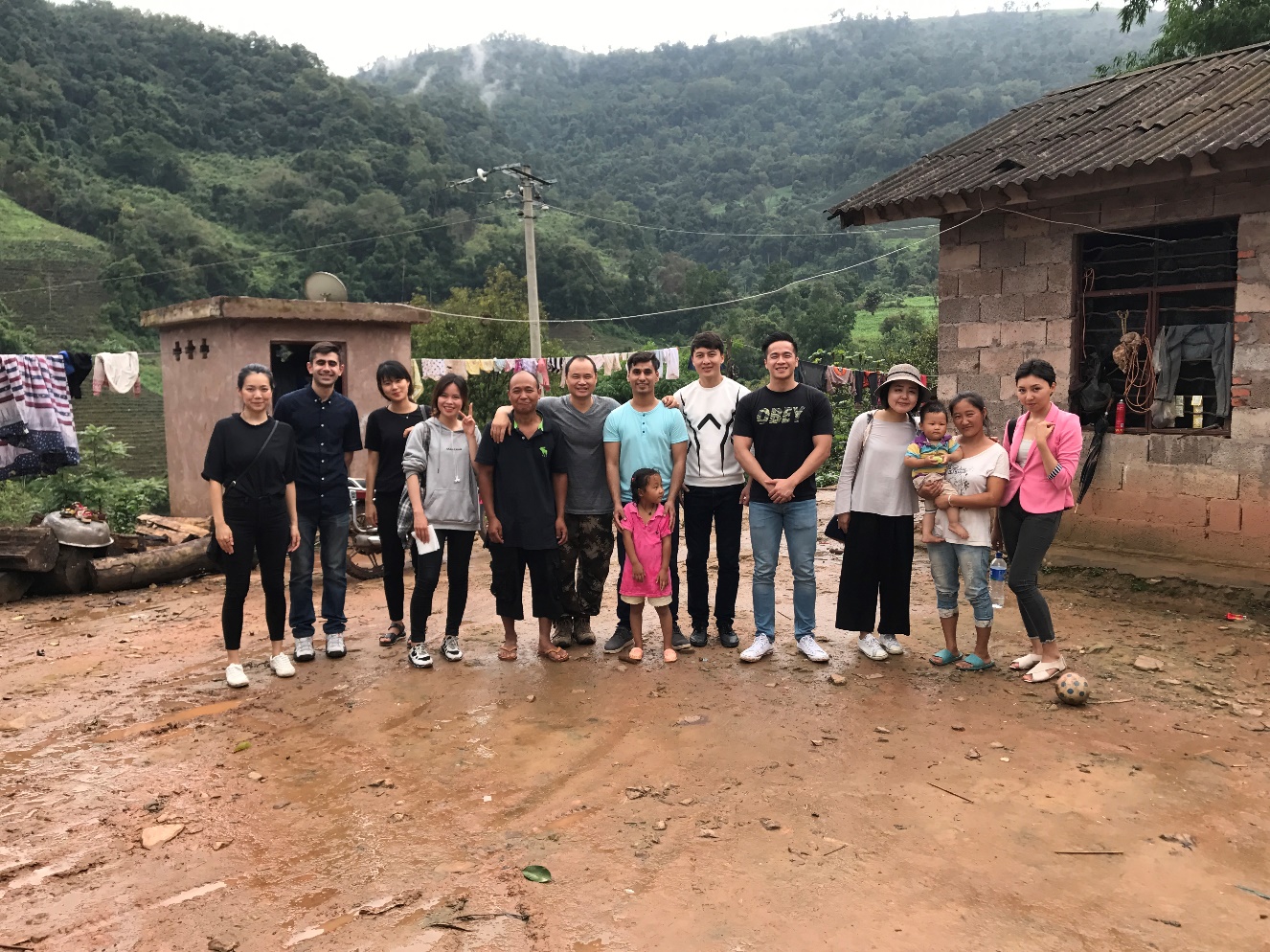
On the 22nd of June, after having breakfast together we went to the next location. This time it was planned to meet with representatives of local authorities. They also welcomed us warmly and treated us with the world-famous Pu’er tea and coffee. We've learned a lot of information there too.
Pu’er is one of the most suitable places for coffee growth in the world. Because the annual average temperature here is 18,9 Co and the average rainfall is 1598 mm. The frost free season lasts more than 315 days a year. The average elevation is 1400 meters. Therefore, it is known as “paradise of Arabica”. Coffee cultivation here was begun in the 19th century and industrialization development was prompted in 1988. Currently, the coffee cultivation area, with the output of 55,000 tons and total output value of 2,04 billion yuan, has reached 770,000 mu in Pu’er city. Pu’er coffee has been exported to more than 30 countries and regions in America, Europe and Asia. The coffee industry has benefited 75.000 households in 83 townships in 10 counties. It is the Arabica coffee cultivation core area with the highest yield and the best quality in China and the main coffee trade centre. In December 2012, Pu’er city was awarded the honorary title of “Pu’er – Capital of Coffee in China” by China Fruit Marketing Association. In March 2017, Pu’er coffee became the top 10 Chinese agricultural regional brand value with the value of 11,136 billion yuan.
Now, Pu’er has built the key project of Ministry of Agriculture Yunnan Coffee Quality Seed Breeding Base, coffee trade centre, Coffee Quality Supervision and inspection centre, coffee research centre and Coffee Meteorological Service. Nestle, Starbucks, Ecom, Louis Dreyfus and other international coffee brands are purchasing coffee beans from Pu’er. More than 95% of coffee beans produced in Pu’er are sold to over 30 countries including US, Germany, France, Japan, South Korea, Saudi Arabia and others. Pu’er city is going to use modern agriculture concepts to plan the development of its coffee industry, stick to the unique, scalded, standardized, industrialized, brand-focused and international developing mode, and map out the development strategy for coffee industry with the whole picture of supply and chain in mind.
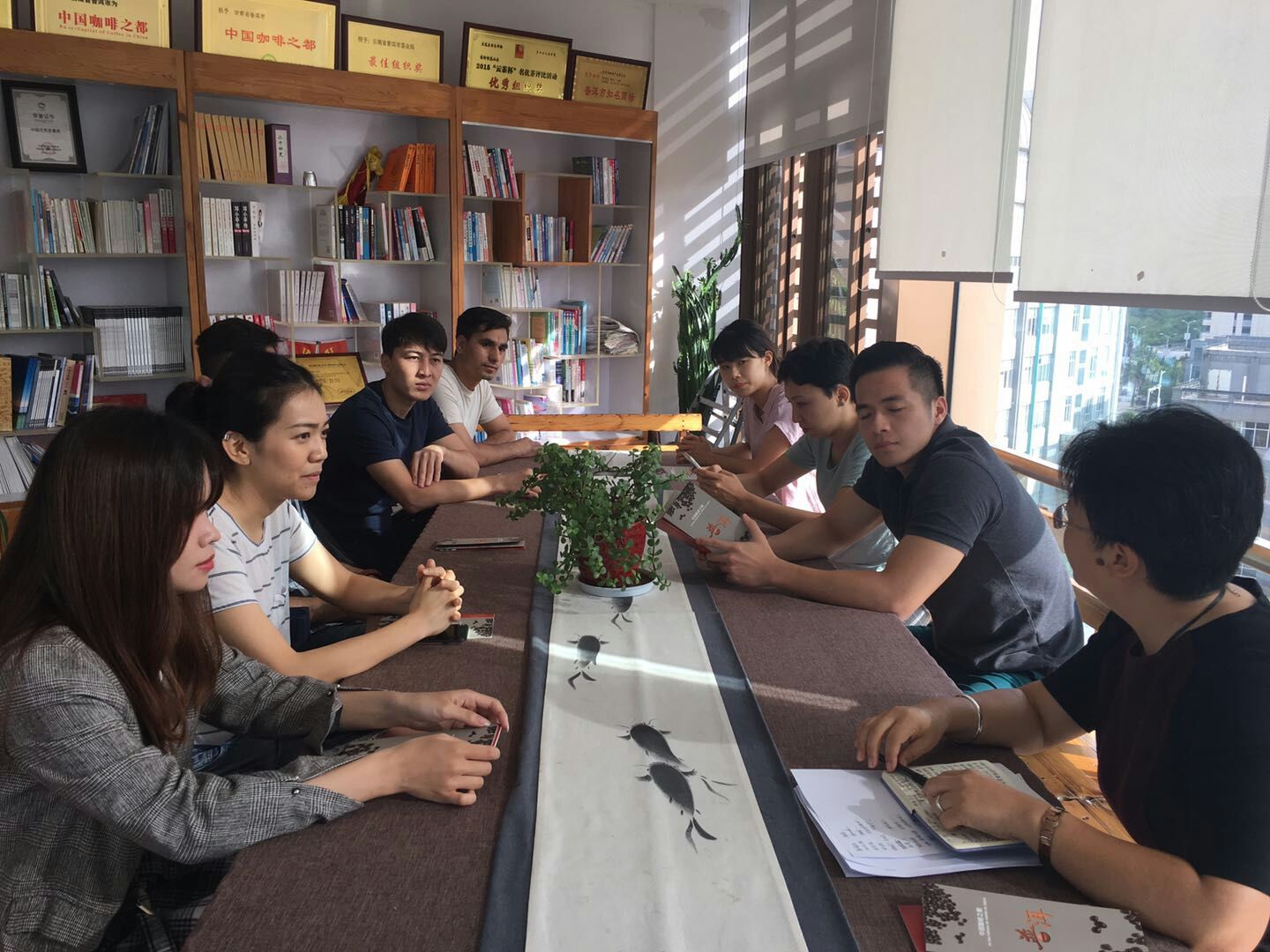
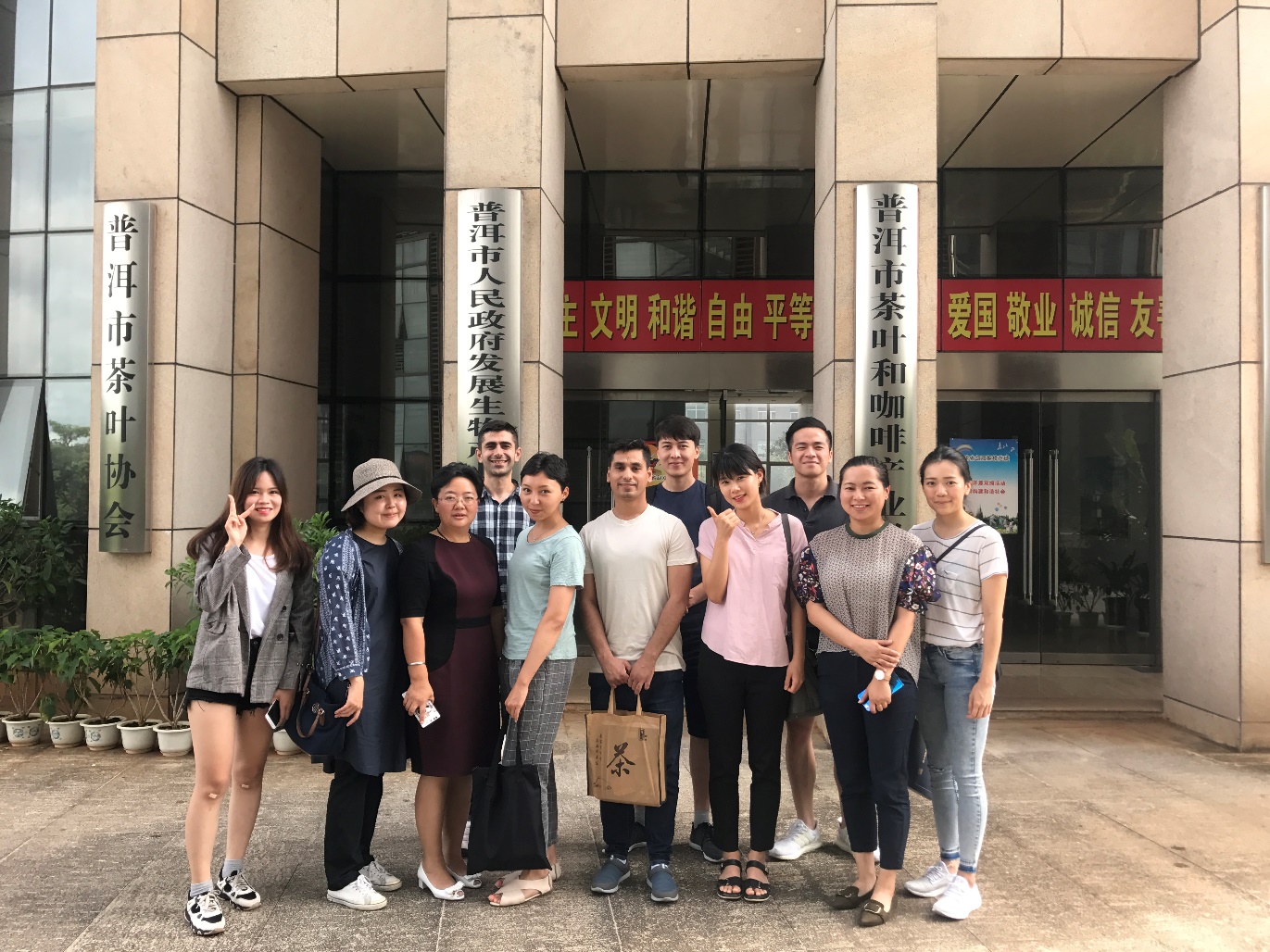
After the brief conversation, one of their staff, who was very friendly, guided us to the coffee exchange centre. There are exhibitions dedicated to the support of entrepreneurs, training farmers and other coffee production deals. During the excursion we witnessed the process of coffee tasting. This complex process has been of great interest to all of us.
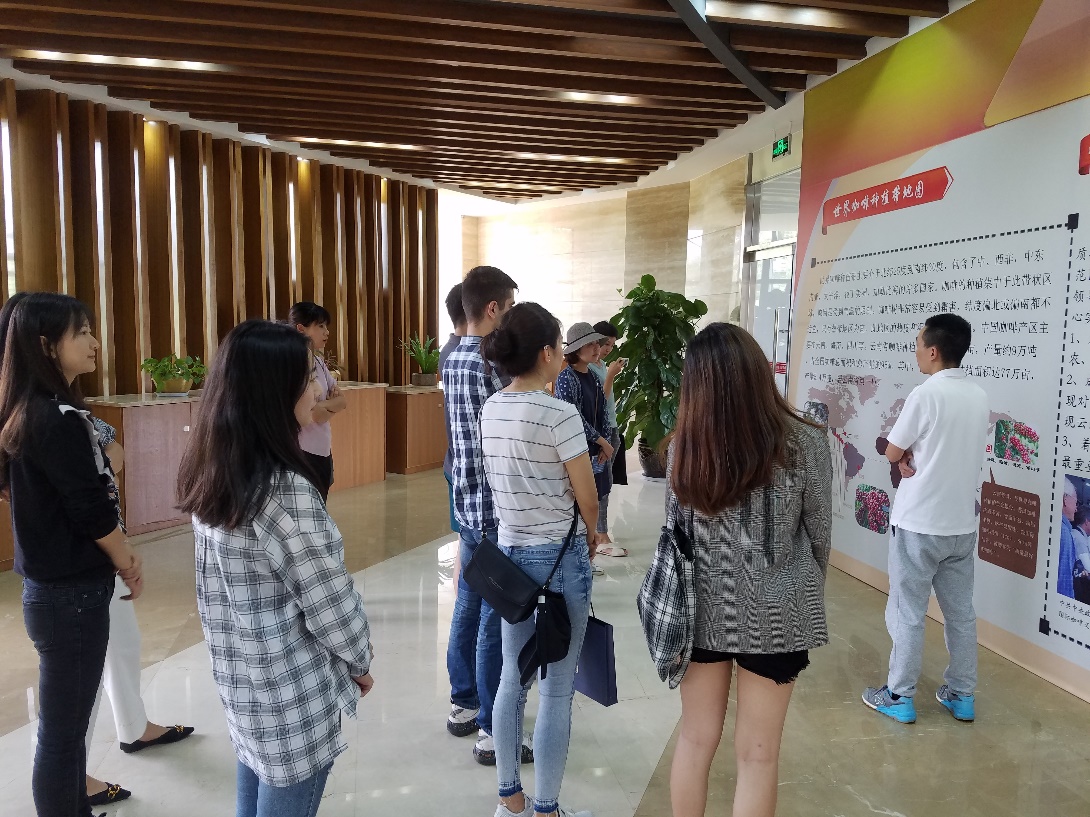
Our next destination was to meet and talk with a local Chinese businessman, who had a chain of coffee business from growing until coffee processing factories and coffee shops. The conversation took place at one of his coffee-shops. During coffee breaks, they also showed us how to do the fermentation of coffee beans.
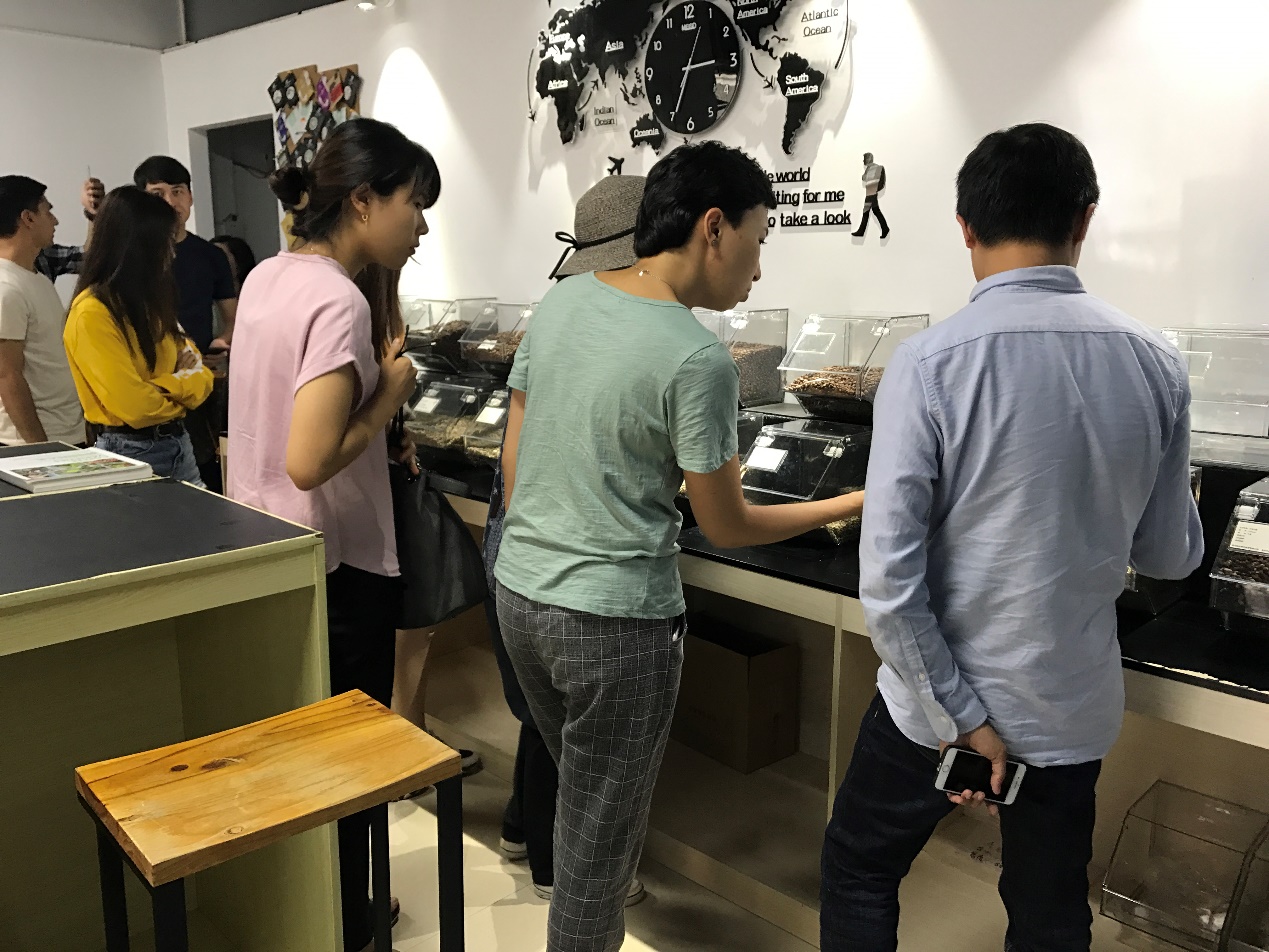
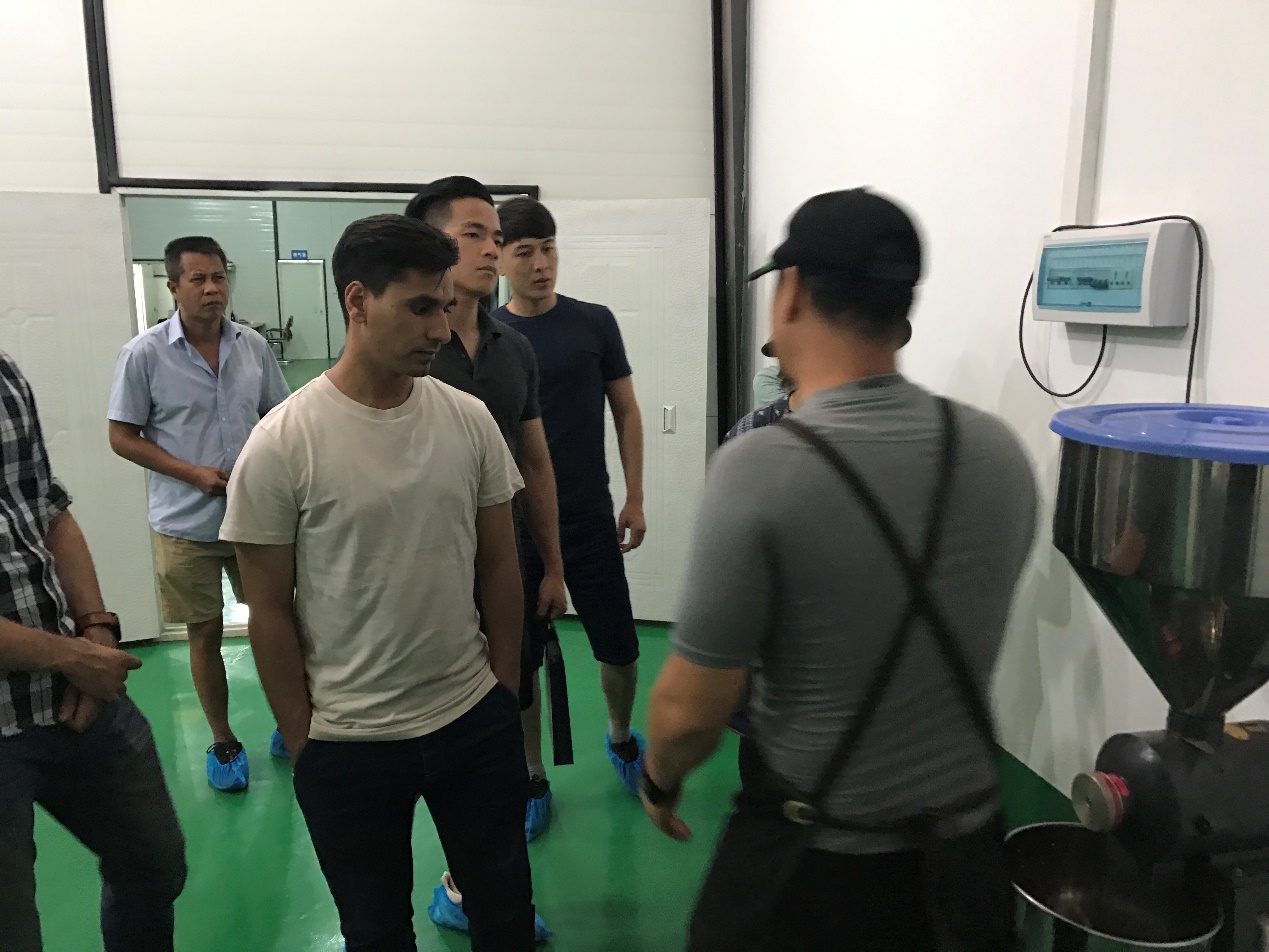
So, within two days, we have gained a lot of valuable information about Chinese coffee industry, its cultivation, processing, and sales. At the end of the day, we had some time to go out to see the city. We all went out to explore this city more.
On the morning of June 23, when we were heading to the local airport, we decided to come back to this wonderful city again. That evening we arrived at Hangzhou, to our university at about 8pm. Our two-day trip was extremely enjoyable and rewarding. All of our group members have the same opinion on this.
